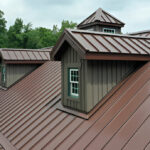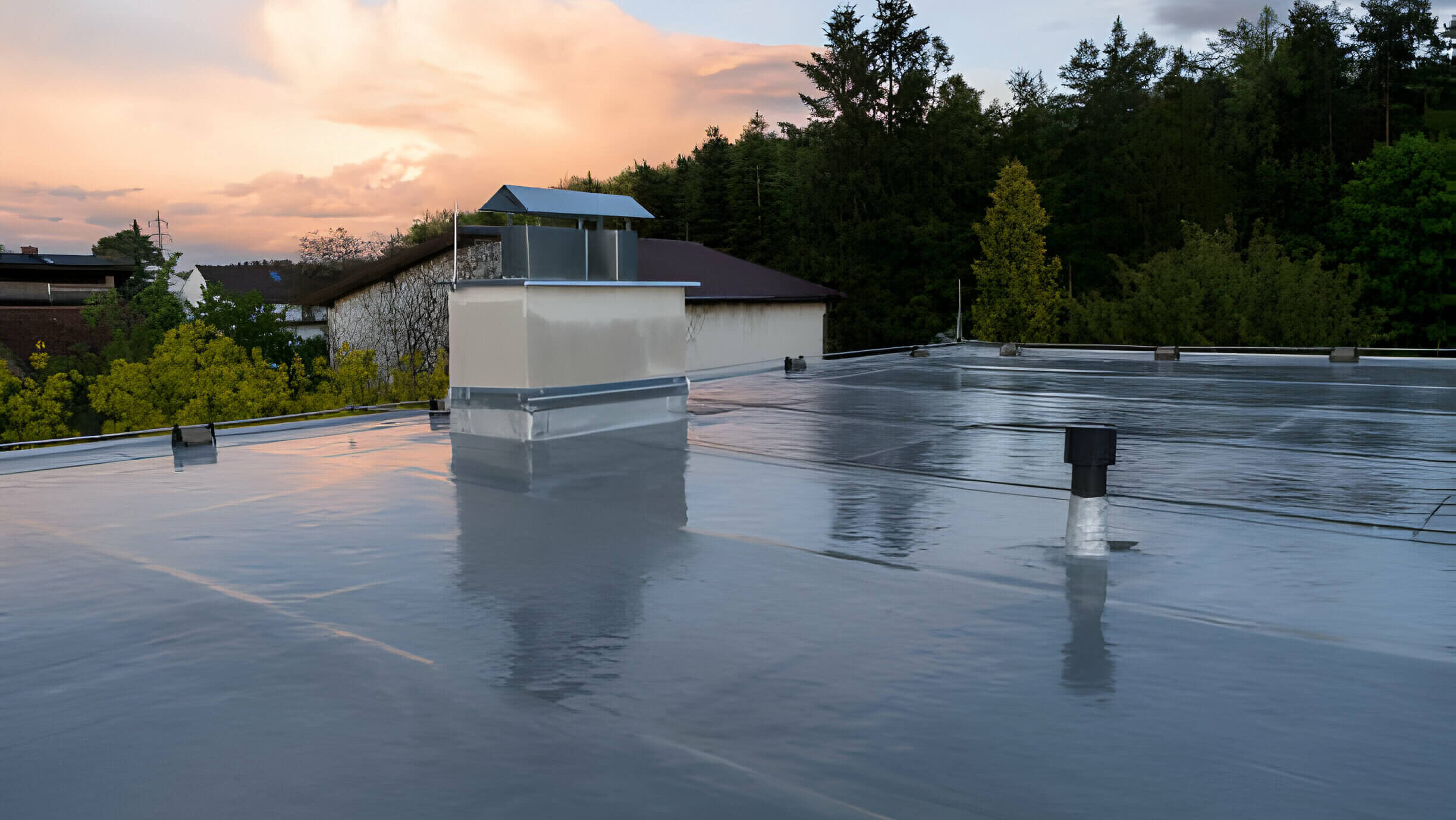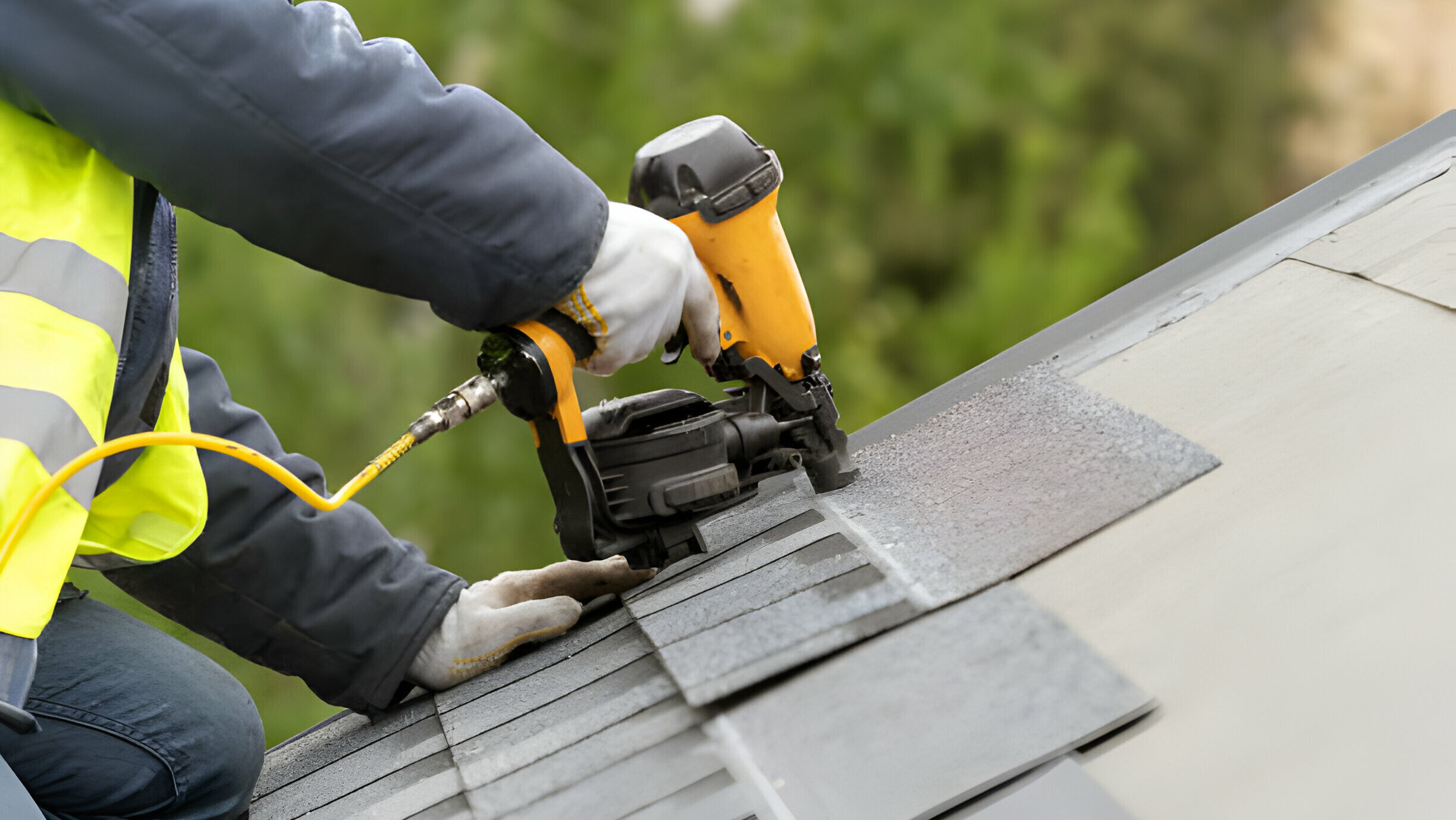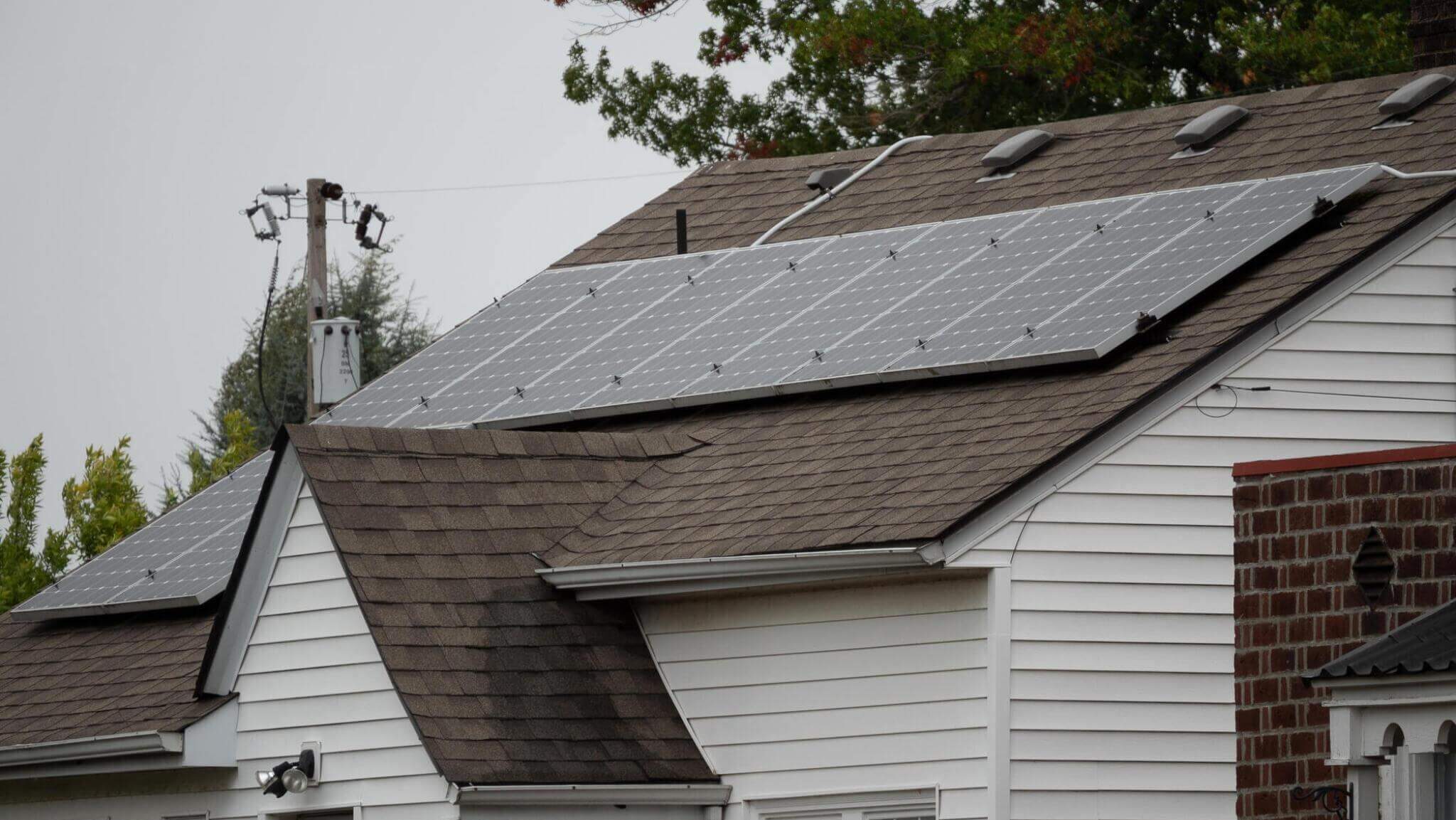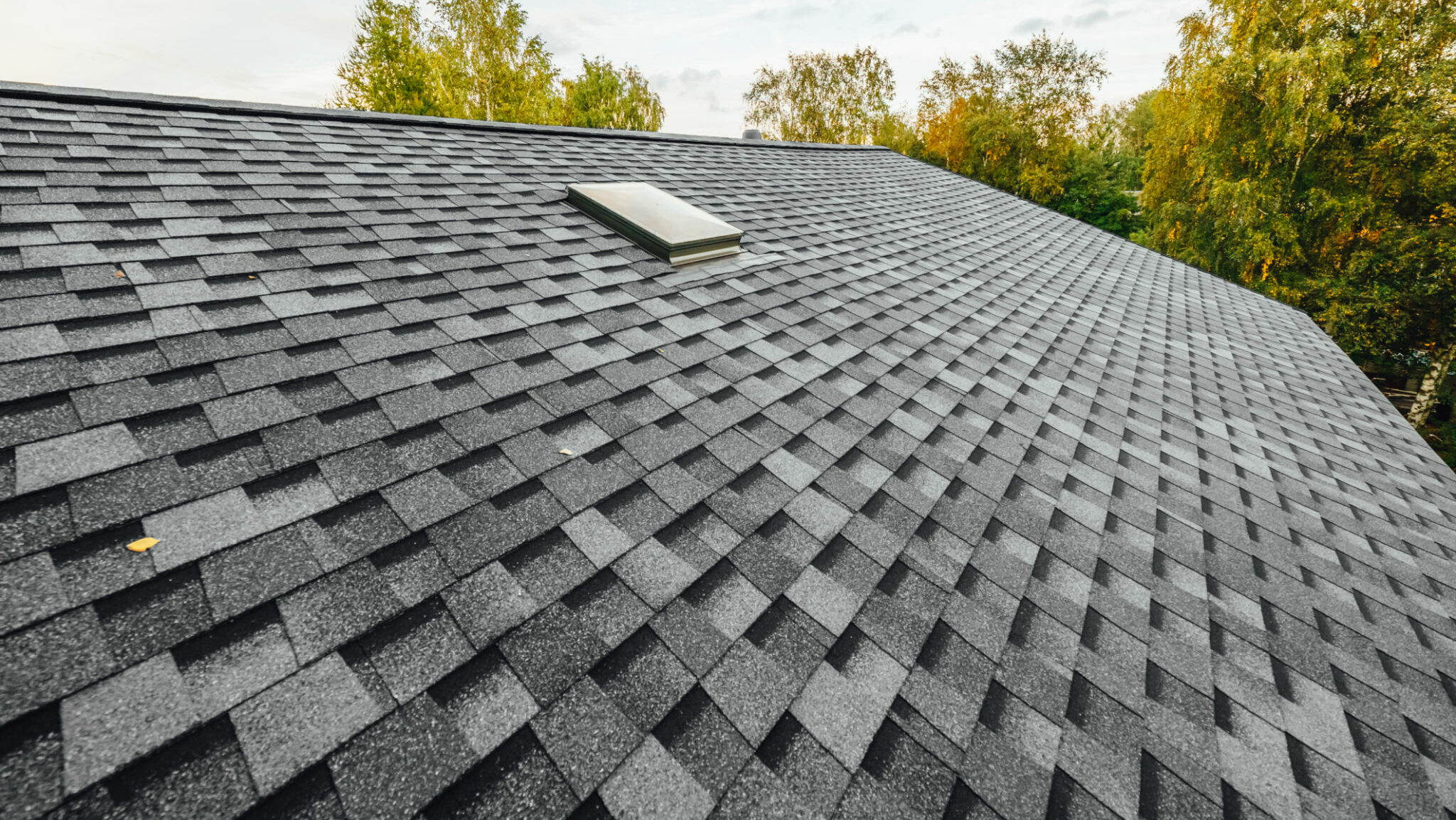Exploring metal roofing options for your home? You might encounter terms like standing seam and exposed fastener. Standing seam and exposed fastener (a screw-down panel), are particularly prevalent.
Table of Contents
ToggleDo not worry if these terms are new to you and you are still drawn to metal roofing.
This is the perfect starting point to dive into metal roofing, understanding the key differences between exposed fastener vs standing seam systems.
Let’s solve the essentials in a clear, straightforward manner.
Standing Seam Vs Exposed Fastener
Metal roofs, a blend of durability and style, often consist of corrugated galvanized steel.
This involves coating wrought iron-steel sheets with zinc or using a mix of zinc, aluminum, and silicon-coated steel, then shaping them into corrugated patterns.
As for standing seam versus exposed fastener metal roofs, they are quite unlike.
Despite sharing some materials and serving the same main purpose – sheltering a structure – these two systems significantly differ in their advantages and drawbacks.
Each offers unique features and considerations, making them suitable for various needs and preferences.
4 Major Types of Metal Roofing
Here are the major 4 types of metal roofing:
1. Aluminum Roofing
Aluminum roofing may seem light as a feather, but it is surprisingly tough.
It offers a superb balance of strength and lightness, beating other metal roofing options.
With aluminum, you get robustness comparable to, or even exceeding, heavier materials. This makes installation smoother and less cumbersome.
Pros
- Corrosion-resistant
- Lightweight
- Malleable
Cons
- More Prone To Denting (Compared To Steel)
- Less Availability and Color Options
- Higher Cost
2. Copper Roofing – Best for Weather-Resistance
Copper roofs, a classic choice in residential metal roofing types, have been completing houses for ages. This metal might hit your wallet harder, but it is worth every penny.
Why?
Because copper roofs are incredibly long-lasting. They do not just endure for a hundred years; they can keep shining for up to two centuries in perfect conditions.
That’s right, 200 years!
Pros
- Eco-Friendly alternative
- Durable and corrosion-resistant
- A lightweight material
Cons
- Expansion and contraction
- Special care
3. Corrugated Metal Roofing – Best Choice for Commercial Structures
Have you ever noticed how some metal roofs turn pink or baby blue over time? That is because they were originally a different color.
Corrugated metal roofing often uses siliconized polyester paint, which does not last as long as other types. This means the color can fade pretty fast.
AG panel roofs need a special coating like Kynar to keep their color longer.
Pros
- Cost-Effective
- Readily Available
- Oil Canning Is Less Obvious
- Simple Installation (DIY friendly)
Cons
- Exposed Fastener Panel
- Frequent Inspections
- More Material Needs To Be Purchased (Panel Sidelap)
- Panel Appearance
4. Steel Roofing
Steel, a mix of iron and other elements, is for more than just commercial buildings. It is becoming a hit for houses too.
Why? Because it is budget-friendly, lasts a long time, and does not require much upkeep. In short, steel roofs are a smart choice for both offices and homes.
Pros
- Low Maintenance
- Resistance To Fires And Rotting
- Longevity And Cost Effectiveness
- Durability
Cons
- Less Corrosion Resistance
- Greater Weight
- Lifespan
Standing Seam Metal Roof
Standing seam metal roofs are a smart choice for their durability, energy efficiency, and attractive look.
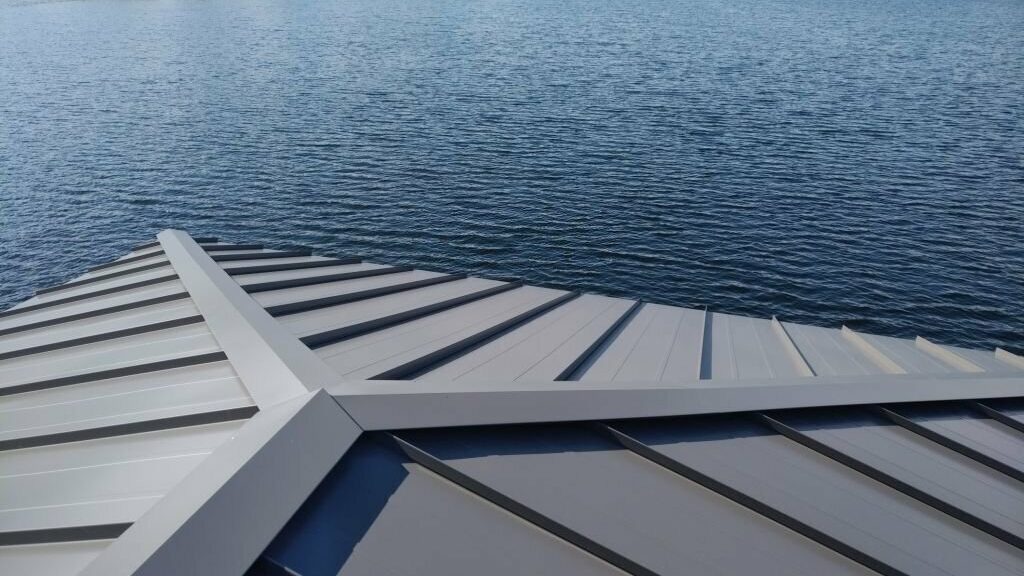
The key feature of these roofs is the absence of visible fasteners, making them sleek and clean.
These roofs are 60 feet long, though sizes over 45 are rare.
They stand out for their long-lasting quality, often outliving other roofing materials. Likewise, their energy-efficient design can help reduce your heating and cooling costs.
What Is A Standing Seam Metal Roof?
Standing seam metal roofing is a special type of roofing made of metal panels. These panels have two key features:
- They are connected by hidden fasteners
- And prominent, raised seams
Think of it like a metal roof with vertical lines that stand out. This roofing is not just for covering the top of a building; it can also be used on walls.
The cool thing about this roofing is how it is put together. The panels are either clipped to the roof or directly attached, but the fasteners stay out of sight.
Pros
- Standing seam metal roofs have a long lifespan
- They virtually maintenance-free
- Getting a standing seam metal roof raises your home’s curb appeal
- They are eco-friendly and energy-efficient
- The unique design of this roofing system offers superior weather resistance
- A standing seam metal roof can last for decades with minimal maintenance
Cons
- A new standing seam metal roof is expensive
- A standing seam metal roof can be especially noisy during rainfall or storms
- This type of roofing system is typically more expensive than other roofing materials
- Oil canning can happen to standing seam metal roof panels
Exposed Fastener Metal Roof
Exposed fastener panels are smart for those looking to save on costs without compromising quality. Opting for these panels means enjoying a wallet-friendly alternative to standing seam options.

What makes them particularly appealing is their resilience.
They stand strong against various challenges, be it harsh weather, pesky pests, or fire threats. These panels are not just tough; they come in generous lengths, stretching up to 348 inches, nearly 29 feet.
What Is An Exposed Fastener Metal Roof?
There is a type known as an exposed fastener metal roof, often called a screw-down panel. The fasteners, which are screws, are not hidden.
They are right out there in the open, attaching the metal panels to the surface with screws and washers driven straight through the metal.
An exposed fastener metal roof is a great match for structures like carports, garages, enclosed porches, barns, or any space that is not used as a regular heated living or work area.
Pros
- They cost less than standing seam
- Exposed fastener panels are usually thinner and therefore less expensive than standing seam panels
- These systems do not require seaming the panels together.
- Exposed fastener systems are resilient and long-lasting when installed properly.
- It has a unique appearance
Cons
- It has a weak leak resistance
- Installing an exposed fastener roof requires creating many holes
- It may not be considered a good choice for property owners who want a sleek and modern look
Difference b/w Standing Seam vs. Exposed Fastener
Here are the main factors that differentiate both standing seam and exposed fastener metal roofs;
| Features | Exposed Fastener Metal Roof | Standing Seam |
|---|---|---|
| Appearance | Traditional | Smooth & Modern |
| Installation | Faster and easier to install | Narrower and requires more skilled labor |
| Durability | Durable, but may require more frequent maintenance | More Durable – More resistance to leak |
| Maintenance | Require more frequent maintenance | Require less maintenance |
| Cost | More expensive | Less expensive |
1. Appearance
Standing seam metal roofs boast a sleek, contemporary style and are a notable entry in any roofing material list.
They feature elevated seams that join panels together while keeping fasteners hidden, contributing to a smoother appearance.
On the other hand, exposed fastener roofs present a more classic aesthetic. These roofs are easily recognized by their visible fastener heads, giving them a more rugged, practical look.
2. Installation
When choosing a metal roof, knowing the differences between standing seam and exposed fastener systems is key. Standing seam roofs, while robust, are trickier to set up.
They need more fine skills and steps, making them a project for the more seasoned installers.
On the flip side, exposed fastener metal roofs are the go-to for a quicker, simpler installation. Their ease attracts a wider range of contractors, much like the process seen in composition roofing installation.
3. Durability
Standing seam roofs are a strong, long-lasting choice. These roofs can keep going for up to 50 years. That is way longer than the usual asphalt roof, usually lasting around 17 to 20 years.
But if you are considering a metal roof with exposed fasteners, it is a bit different. Its life depends on a few things, like how well it is put up and if you look after it.
Generally, these can last about 20 years with proper installation and care.
4. Maintenance
Standing seam metal roofs do not need as much upkeep as exposed fastener roofs. With exposed fastener roofs, you will find yourself doing more regular maintenance.
This means looking for any fasteners that are coming loose, damaged, or starting to back out. Also, using a lubricant’s a good idea to help lessen friction and prevent rust from setting in.
5. Cost
When it comes to roofing, your options and costs vary. For instance, roofs with exposed fasteners are more budget-friendly, usually around $4 to $6 for each square foot.
They come with a finish warranty that could last up to 50 years and a metal warranty of around 25 years.
Conversely, if you opt for standing seam roofs, you’re looking at a higher price tag, about $12 to $16 per square foot, similar to the investment for innovative options like GAF solar shingle cost. These roofs boast a long-lasting 40-year warranty from the manufacturer.
Should I Choose a Standing Seam or an Exposed Fastener Metal Roof
Let’s break it down
If saving money is your jam and you are into the whole do-it-yourself situation, then panels with visible fasteners are a solid pick. They are wallet-friendly and let you get hands-on.
However, if you are in the market for a roof that’s all about sleek looks and top-notch performance and don’t mind spending a bit more, consider a standing seam metal roof.
While considering options, also explore roofing asphalt types for different aesthetics and functionalities
These are designed to last for ages and bring that extra oomph to your house.
Standing Seam Vs Exposed Fastener FAQs
How To Screw A Metal Roof Down?
Secure a metal roof by aligning screws with the roof’s ridges, not the valleys, and use a screw gun for uniform tightness. Keep the spacing consistent for a neat and effective finish.
Should You Replace Screws In Metal Roofs?
Yes, replace screws in a metal roof periodically. Over time, they can loosen or wear out, potentially leading to leaks or reduced stability of the roof.
Do Metal Roofs Leak More Than Shingles?
Metal roofs generally leak less than shingles, as they are more durable and resistant to extreme weather. Proper installation and maintenance are key to their long-lasting performance.
Conclusion
Deciding between standing seam and exposed fastener metal roofs?
Both have their upsides and downsides.
Standing seam roofs are sleek, with hidden fasteners, offering a modern look. They are durable but can be pricier.
Exposed fastener roofs are more budget-friendly and easier to install but might need more maintenance.
Before you pick, think about what matters most to you on a roof. Is it long-term reliability or cost-effectiveness?





